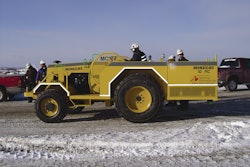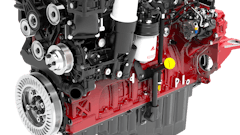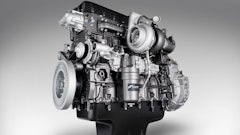Here's one for the "tell me it can't be so" file. A new, five-year study warns that federal regulations designed to reduce NOx may actually increase ozone pollution in urban areas.
That's right. Reducing NOx may actually increase ground-level ozone due to the interaction of NOx with volatile organic compounds (VOC) in the atmosphere. At the very least, the study suggests, reductions in NOx emissions seem to have minimal impact on ozone formation. As a result, regulators would have a greater impact on improving air quality if they shifted their emphasis from NOx to VOC emissions, one of the study's authors suggests.
The study's findings, which support conclusions from similar but more localized studies, may come as quite a shock to engine and equipment manufacturers who have been feverishly working since the early 1990s to reduce NOx emissions, a by-product of the diesel combustion process. The industry has spent tens of millions of dollars to reduce NOx emissions by 90% and additional reductions are required in the on-highway regulations slated to take effect in 2010 and the off-highway regulations slated to take effect in 2011.
How smog is created
Ground-level ozone, or smog, is created when NOx and VOCs interact with sunlight. VOCs encompass of hundreds of chemicals, including formaldehyde, benzene and propylene. A significant portion of VOCs are emitted during photosynthesis and other natural processes. VOCs are also generated by industrial processes — dry cleaning, painting, chemical plants and refineries — as well as gasoline-powered engines.
Federal and state regulators have focused on reducing both NOx and VOC emissions over the years, but NOx reductions have been the primary concern for the off-highway market.
Regulators assumed that achieving significant reductions in NOx emissions would result in similar reductions in ozone. About 10 years ago, however, scientists began to notice an odd trend. Ground-level ozone levels in southern California were increasing on weekends when NOx emissions decreased because there were fewer heavy-duty diesel trucks on the road. The phenomena became known as the "weekend ozone effect."
For years, scientists thought the phenomenon was restricted to the unique microclimate of southern California. The new study, "Differences Between Weekday and Weekend Air Pollution Levels in Atlanta, Baltimore, Chicago, Dallas, Fort Worth, Denver, Houston, New York, Phoenix, Washington D.C. and Surrounding Areas," by Charles L. Blanchard and Shelley Tanenbaum, Envair, Albany, CA; and Douglas R. Lawson, National Renewable Energy Laboratory, Golden, CO, suggests the problem is occurring in urban areas throughout the United States.
The study evaluated day-of-week difference in concentrations of NOx, carbon monoxide and VOC at sites in 23 states between 1998 and 2003. The study indicated that while NOx levels dropped by up to 50% on weekends, ozone levels remained steady at 83% of the sites and showed a statistically significance increase at 11% of the sites.
The study's impact on NOx emissions is far from clear. No one expects regulations already on the books to be rewritten, and once the regulations currently in the pipeline take effect, regulators will all but have eliminated NOx emissions from diesel-powered engines. However, the regulations may impact states' efforts to limit emissions from existing off-highway equipment. California, for example, will soon require owners to replace or repower existing equipment, with other states expected to follow suit.
The study could force regulators to rethink the economic benefits of this requirement, especially given the current slump in construction and transportation. California could proceed with the in-use regulations that address particulate emissions, but drop the repowering requirement, which is principally focused on NOx.
The focus on VOCs
The findings may also place greater pressure on cars and lawn-and-garden equipment. Of primary concern are the VOCs that evaporate into the atmosphere from fuel spills as well as fuel lines.
Federal regulators have already addressed these issues in small-engine regulations that recently took effect for lawn and garden equipment. They include regulations that restrict the amount of fuel that can evaporate from fuel lines, gas caps and fuel tanks. The reductions will be achieved through new layered plastic tanks and the use of "low-permeation" fuel lines that contain a thin plastic layer sealed between two rubber layers. "Running loss" emissions — the evaporative emissions that occur during normal operation — are reduced by sealing the fuel cap and routing vapors from the fuel tank to the engine intake.
Perhaps the most significant aspect of the study is the realization that assumptions change as science advances. As these assumptions change, regulators and the industry must be open to making changes so that money is not being wasted on solutions that will not achieve the desired goals. This promises to be a critical issue as regulators seek to expand their scope into the vast expanse of greenhouse gas emissions.
Dave Jensen is a contributing editor from Milwaukee, WI.

















